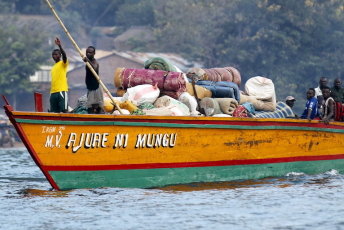The number of drug users in sub-Saharan Africa is expected to increase by nearly 150% by 2050, according to new research by the ENACT programme at the Institute for Security Studies, in partnership with the Frederick S Pardee Center for International Futures.
This is just a 5% increase in the proportion of its population experimenting with illicit substances relative to today. But the projected population growth in sub-Saharan Africa means the continent will experience the largest growth in the number of absolute users of any region on the globe.
This is in contrast to a roughly 70% increase in South Asia, a developing region also set to experience a rapid escalation in the number of drug users by 2050, as illustrated by the figure below.
Research on the effects of illicit drug consumption has largely been restricted to the developed world. Some investigations into the role that developing countries play in international drug markets have been done, but there hasn’t been much research into the local effects of increased drug usage in these countries. The focus has largely been on developing regions as sites of production or transportation, rather than consumption.
The new ENACT study reveals several interesting findings. For one, illicit drug consumption in sub-Saharan Africa is already quite high. At 1.6% of the adult population, drug prevalence levels are higher in sub-Saharan Africa than in Latin America and the Caribbean or South Asia, though not as high as in Europe and Central Asia.
There are many forces driving this surge in drug prevalence. Africa is persistently young, increasingly affluent and rapidly urbanising – all factors that elevate the probability that a person will decide to use illicit substances.
The continent also suffers from high levels of poverty and inequality, which the World Health Organization has found creates additional stress factors that make a person more likely to engage in risky behaviour. There are also cultural factors that can make people more (or less) likely to use drugs.
Some traditional societies are able to rely on customs and norms to deter at-risk individuals from using drugs. But other, often more liberal, societies may be more easily influenced by a westernised culture – due to the ubiquity of the internet and social media – that is more tolerant of drug use. There is also research to suggest that the actual substance that people experiment with is highly elastic and influenced by a number of factors like availability, popularity and relative cost.
This means Africa will see roughly 14 million additional drug users on the continent in 2050, on top of the nearly 10 million using drugs today. This will obviously create new issues around law enforcement and criminal justice in many African countries, but it will also place public health systems on the continent under enormous stress.
Many countries in Africa are already experiencing a ‘double burden’ of disease, characterised by high rates of communicable and non-communicable diseases. Adding a sudden and potentially unexpected influx of problem drug users into a health system already struggling to provide basic services like vaccinations or neonatal care could be a recipe for disaster.
African countries need additional capacity within existing health programmes to deal with this new problem, but they also need more educational programmes to make the youth aware of the dangers of drug use. There are also preventive programmes, like clean needle exchanges, decriminalisation of certain substances and universal access to modern contraception, that can help stem some of the pernicious effects of drug use.
Two of Africa’s five regions are forecast to be particularly affected by the rapid rise in drug users. With nearly six million users today, West Africa accounts for the majority of drug users in Africa. While the absolute number of users is projected to balloon to over 13 million, its share as a proportion of total drug users in Africa will remain relatively constant.
East Africa is forecast to experience the most rapid rise in the proportion of its population using illicit drugs. Compared to West Africa, where drug use is forecast to roughly double between now and 2050, in East Africa drug use is projected to nearly triple, going from about two million today to about 5.5 million in 2050.
East Africa is the continent’s most rapidly urbanising region, with a large youth population that is experiencing a growth in disposable income and improved gender equality. Women in countries that enjoy greater equality across genders are more likely to use drugs than in countries where women generally lack freedom and equality, other things being equal.
While this research represents an important step forward, much remains unknown about drug use in Africa. In 2017, just one quarter of African states reported data to the UNODC, compared to more than 60% in South and East Asian countries. Only two African countries reported data on opiate use in 2017 – Tunisia and South Africa.
Though this project combined data from the UNODC and the Institute for Health Metrics and Evaluation (IHME), there is still a dearth of information available from Africa, even relative to other developing regions.
The UNODC, and more importantly African states, need to report data more frequently and more timeously. This will help researchers and health professionals better understand the scope of the problem. It could also help law enforcement to curb the flow of the illegal substances across international borders.
Zachary Donnenfeld, Senior Research Consultant, African Futures and Innovation, ISS








